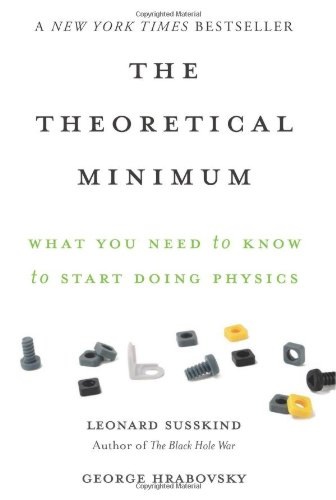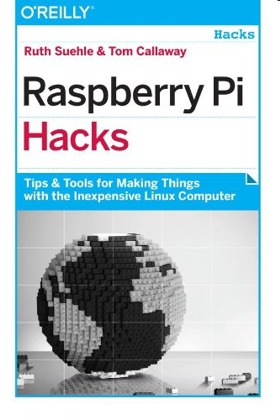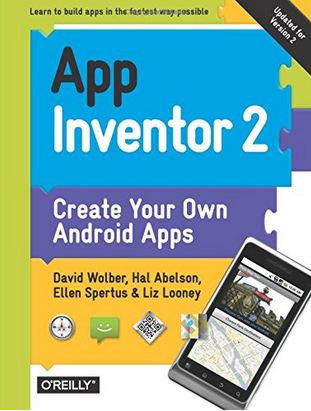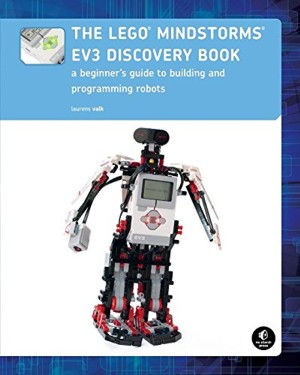| Best Books Of 2014 |
| Written by Sue Gee | |||||||
| Tuesday, 06 January 2015 | |||||||
Page 3 of 3
Our reviewers sometimes choose books that are outside the immediate remit of "programming" and at times look at books for different groups, such as "kids of all ages". We start here with a book on physics and conclude with one on LEGO with Raspberry Pi and App Inventor sandwiched between them. The Theoretical MinimumAuthor: Leonard Susskind & George Hrabovsky The Theoretical Minimum is a good title but its sub-title "What you need to know to start doing physics" is misleading. You can do some physics with much less and even top level physics without understanding very much in this book at all. Some of the publicity for this book also claims that it is suitable for the beginner and that it is what you need to read as a way into physics. It isn't. This is not a book to get you started in physics and it isn't a book that you need to read to do physics. This mis-targeting by the publisher is one reason why some readers might really hate this book. Its clear message about some very messy areas of classical physics is one good reason why some readers will love it. However, because it has some chapters included to make it look like a book for beginners some of the readers who would benefit from reading might well be put off. The most important thing to realize is that this is two books, by two very different authors, pushed together. There is a deep thinking account of the modern approach to classical mechanics and a very simple introduction to calculus and Newtons laws of motion. The problem is that no one reader is going to want to read both.
This is a great book if you have encountered enough physics to know that you don't quite get Lagrangian mechanics. The reason is simple enough because after reading it you will get it and Hamiltonian mechanics and a lot of other sophisticated ideas. If you are such a reader then I would suggest reading Lecture 1 carefully, then skim read the next two and their associated interludes and restart at Lecture 4. Whatever you do don't give up on the book because of the pages devoted to "what is a derivative". What if you actually need to know what a derivative is? My advice would be to pick up another book. This one is altogether too short and gets too deep to provide a route into physics from that starting point. The bottom line is that this is a highly recommended book if you have enough physics and or enough math. Raspberry Pi HacksAuthor: Ruth Suehle & Tom Callaway This isn't a super advanced book and it presents its information in a fairly digestible way. It has humour too, but don't expect to fall about laughing. It is also a mix of hardware and software hacks that needs that special blend of knowledge between the two to get the most from the book and the Raspberry Pi. The range of 65 hacks is also fairly wide so don't expect to find that every one is useful to you.
The book is divided into six parts: Chapter 1: Configuration Hacks starts off from basic things like using the right SD card, LEDs, updating the firmware and so on. A large number of the hacks are concerned with how to power the Pi and small hardware mods like adding a reset button. Chapter 2: Hacking Linux for the Raspberry Pi is mostly not about the basic Linux commands. The first hack is about building a cross-compiler toolchain so that you can move on to the next hack and build a custom Linux Kernel.. It also covers some easier things like emulating the Pi on QEMM, using Occidentalis and running Android on the Pi. Chapter 3: Raspberry Pi Around the House is a bit more standard in that it starts off with how to get Samba running and then how to use the Pi as a remote print server. Chapter 4: Hacking the Outdoors is a collection of fairly standard hardware projects - temperature measurement, auto-check on plants watering, making the Pi water-resistance. geocaching, radio, aerial photography and a lights display. Chapter 5: Multimedia Hacks takes you though playing video files, adding codecs, building a music box, radio, adding a touch screen, classic video game console, controlling a DSLR, media center and mobile video player. Chapter 6: Extend You Pi has projects to allow you to control the GPIO from a web browser, add a small screen, use Arduino shields, control a 3D printer and add a numeric keypad. How much you get out of this book depends on what you want to do. The parts that were most valuable to me were on the software - especially creating a custom Linux Kernel which really does open up some additional possibilities. The feel of the book is very much "hack" rather than buying off-the-shelf finished units and this makes it so much the better. App Inventor 2Authors: David Wolber, Hal Abelson, Ellen Spertus and Liz Looney This book assumes no previous programming experience, nor a technology background. It aims to provide an easy introduction to Android mobile development specifically, and programming in general. The App Inventor environment takes a visual approach to programming, creating apps can be as simple as drag-and-drop components onto the screen area and setting their properties. All work is stored in the cloud, so there are no installation or update problems to contend with. App Inventor was originally created by Google, and then passed to MIT to develop and support.
This is a fun book, suitable for people with or without prior programming experience, for ages 10 and up. It is easy to read, contains plenty of diagrams, good explanations of the underlying concepts, has useful links between chapters, and uses visually appealing colour throughout. Of course if you have some programming skills already, the book becomes even easier to progress through. The first part of the book provides consistent step-by-step tutorials on how to develop various types of app (e.g. games, quizzes, location-aware apps), which increase in complexity as the book proceeds. Each chapter ends with helpful ideas on how to extend the app, together with a useful summary. The second part of the book consolidates what has been discussed in the tutorials and provides a more technical/reference/programming approach to what has been learnt. If you have an idea for your own app, reading this book will help you create it. Following along with the book’s apps (and their extensions) will surely to give you further ideas. The ideas it contains should prove especially useful for teachers. And yes, I created a few apps for myself with this tool. A free version of all the chapters in the book is available at www.appinventor.org/book2, although the authors suggest you buy the book to support their work.
The LEGO MINDSTORMS EV3 Discovery BookAuthor: Laurens Valk If you have a Mindstorms EV3 robotics kit this is a book you need - and if you are interested in robotics but don't have the kit our review will help you decide if it is the one to buy. Written by Laurens Valk, who has been inventing robots using Mindstorm sets since their introduction, it is intended for the complete beginner to Lego's robot building Mindstorms kits and has instructions for five robots.
This full-color book is specific to the LEGO MINDSTORMS EV3 kit and requires only one kit to complete all its robots. It is, however, intended that you follow the projects in the order they are presented as they increase in complexity. Overall, it is a well thought out and implemented book that lives up to its title of being a "Discovery Book". If you tackle all its programming and building challenges you will have learned a lot about programming and about robotics. <ASIN: 0465075681> <ASIN:024100344X> <ASIN:1449362346> <ASIN:1491906847> <ASIN:1593275323> <ASIN:B00KVPM908>
|
|||||||
| Last Updated ( Wednesday, 27 February 2019 ) |




